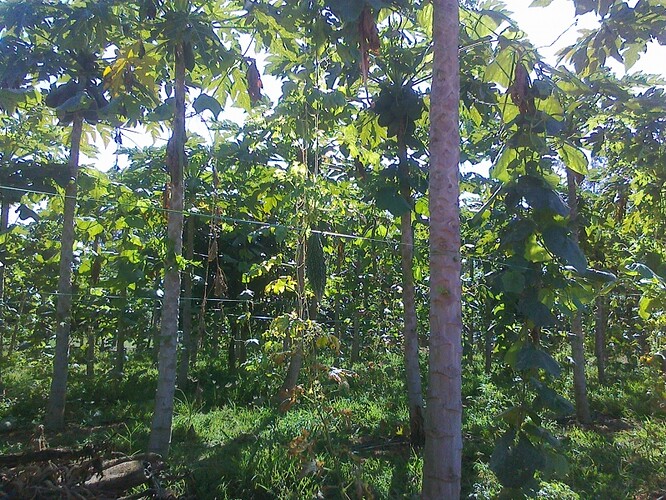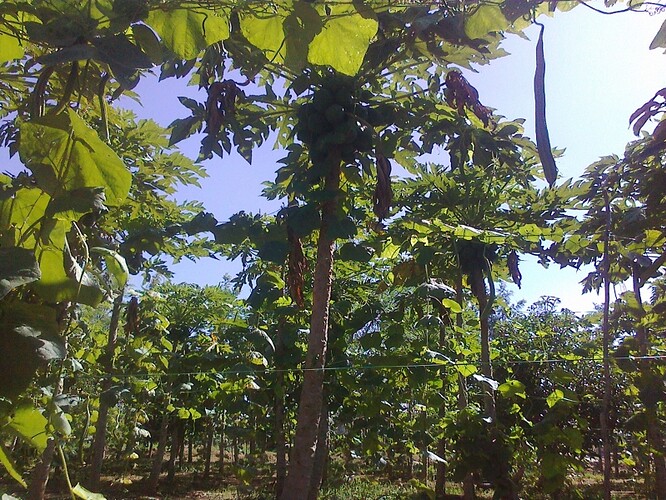Dear Biju/Mathew,
Thanks a lot for the informative replies. As always in a discussion like this, initial answers lead to further questions. I hope you won’t mind answering these further questions that are sprinkled in the lines below.
I understand from Biju than Ginger, turmeric , yam, cowpea and other shade tolerant species can be grown under mature rubber trees.
Q 1. So if cowpea is grown, can cut fodder be taken from the rubber farm to raise goats/ cattle? After all, raising goats and cattle can de-risk rubber cultivation (Since I remember cases of Kerala rubber farmers committing suicide in 2002-2003 due to low rubber prices).
I think I am now convinced of the economics which holds so long as the price of rubber stays at 150+ rs per kg. If like in 2003, it crashes to 30 rs per kg levels, a de-risking strategy might be useful.
I have to admit, I might be wrong about pepper vines on rubber – it’s all from memory - maybe it was betel vine or some other creeper or the rubber farm was not maintained. I did not look for the tapping cuts on those trees, though I think some rain guards and tapping marks were there on some of the other trees in the farm.
As regards rubber inter-cultivation in China, Laos, etc, I guess the lower tree density must be allowing the growth of tea in rubber estates there. However, if as Mathew says, the roots are fine and spread over top soil, then tea plucking activities can damage them. Q 2. I wonder how that is reconciled.
Q 3. Mathew, I am not sure, but I think rubber is a tap root tree. Hence how is there many roots on the top soil? Is it because of the practice of spreading manure between four trees that the rubber tree is forced to grow side-ways roots to reach the manure/fertilizer?
Q 4. Can Biju/Mathew elaborate if you have seen or heard of double row planting in rubber? The robber board guidelines of 28 x 10 feet (8.75 m x 3 m) for inter-cultivation of cocoa seems to lend credence to the practice of wide single row planting, which in practice can be applied as double row planting too (Since in other agro-forestry guidelines, wide single row plantings can be made more resource-efficient with double row planting).
Q 5. Can Biju/Mathew also tell us about mahogany border planting? I believe it is done with the intention to provide wind-break for rubber trees and also as a de-risking strategy.
Q 6. So does rubber tree density reduce from the ideal 180-200 trees/acre because of mahogany trees planted on border with 10 feet interspacing?
Thanks and regards
Shaji

